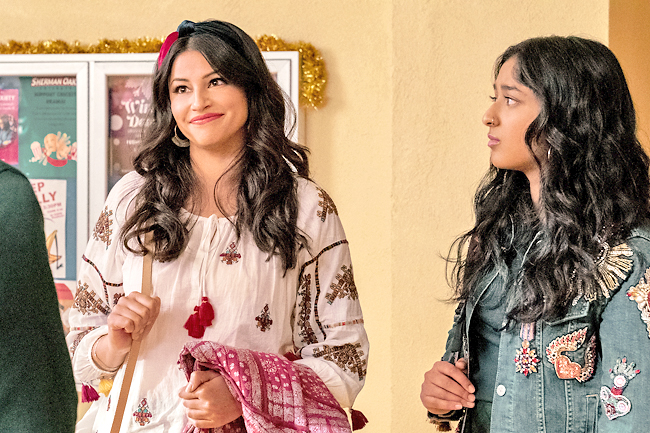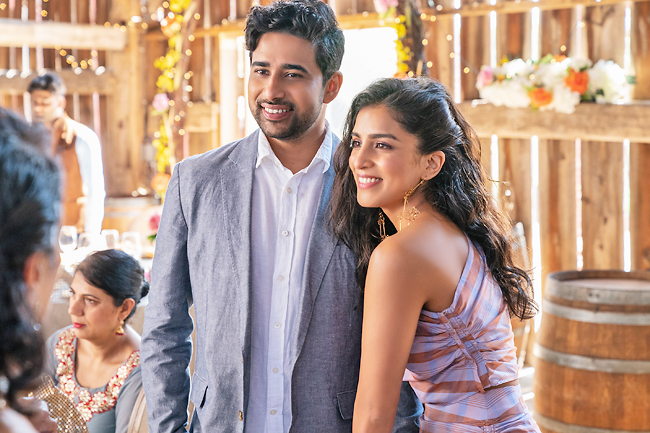Sonia Rao
THE WASHINGTON POST – Visibly frustrated, matchmaker Sima Taparia recounts her struggle to an Indian Matchmaking producer: She has been tasked with finding potential partners for a 30-something Indian man living in Nashik, a few hours outside of Mumbai, but women of his generation would rather live in a bustling metropolis than this quieter part of the country.
Thirty years ago, Sima reminisces, she followed her husband to Nashik and fell in love with the warmth of its people. Why hasn’t anyone done the same for Akshay Dhumal?
“Akshay’s charming, handsome. Parents are good. He’s loaded with money. He has a good business, good education. Everything is there,” she said. “But the girls, they do not want to go to Nashik.”
Generational differences often pose challenges to Sima, whose downsized presence in the new season of the Netflix reality series hints at the evolving landscape of arranged marriage.
When the show premiered two years ago, it set off a flurry of takes in South Asian communities: Some criticised how it painted the culture as “burdensome”, while others described it as “telling it like it is”. Sima’s strong-willed client Aparna Shewakramani became a fan favourite for refusing to contort herself to fit other people’s expectations.
The determined independence exhibited by Aparna – as well as by the women who refuse to abandon their big-city lives – is also a central component of two other recent South Asian-led projects on Netflix: the romantic comedy Wedding Season and the comedy series Never Have I Ever, which released a new season recently. All three were created by Indian Americans and explore the growing sense of autonomy exercised by the people for whom matches are sought, whether in India or as part of the diaspora. Ultimately, the power lies with them.
“In America, you feel tired of being asked about arranged marriage,” said Wedding Season writer Shiwani Srivastava. “But on the flip side, you realise people have a gross misunderstanding of it.”


Following in the footsteps of its rom-com forebearers, the Wedding Season screenplay began with a trope: Protagonists Asha (Pallavi Sharda) and Ravi (Suraj Sharma) would pretend to date, but… to what end? Srivastava, 40, pulled from her life years before, when she attended weddings on an almost bi-weekly basis. Maybe Asha and Ravi want to throw nosy aunties off the scent.
If they “dated” each other, neither one would be pestered into going out with a close friend of someone’s second cousin, twice removed. In the film, Asha, a certified girlboss, starts to resent the expectation that she entertain those match-making efforts. She challenges her parents to consider that she can support herself and may never want to get married. In writing immigrant parents who presumably came to the United States (US) in the 1970s or ’80s, Srivastava made sure to include a line in which Asha’s father, Vijay (Rizwan Manji), observes that his daughter seems to believe her parents’ mentality is straight from the India of 40 years ago.
“I think it does happen. It’s been documented across different immigrant communities: You bring your way of thinking from certain points of time and transplant it in America,” the screenwriter said. “It evolves in America but, meanwhile, India is evolving in parallel. We’re not the same. We’re different cultures.”
Srivastava underscored that Wedding Season, set in her home state of New Jersey, depicts “a very specific Indian American experience for millennials who were born to this wave of immigrants”. The disclaimer could be even more precise. Similar to Never Have I Ever – and, to some extent, this sea-son of Indian Matchmaking – the film doesn’t delve into factors such as caste or colourism, both of which can heavily influence the matchmaking process.
These grains of salt might be implied with a Netflix rom-com, a genre hardly expected to answer for societal shortcomings. Srivastava didn’t set out with the intention to provide commentary on arranged marriage; Ravi, for instance, never hesitates to go out with someone of his parents’ choosing. Srivastava said it was a framework she used to highlight the courage it takes for two people to embrace what they truly desire in life. While Asha and Ravi are initially set up, what matters in the end is that they choose each other.
In Srivastava’s experience, arranged marriage “feels like a misnomer – it’s more like an arranged introduction”, she said. “I often joke with my family about (this) dating service run by your parents and their network. They’re the ones setting you up on the date, and the rest is up to you.”
In Indian Matchmaking, Sima shared her exasperation directly with Akshay and his parents. This isn’t the first time she has been asked to find someone willing to move somewhere like Nashik. She said she often winds up asking clients, “Are you marrying a city, or are you marrying the boy and the family?”
The boy and the family, granted equal weight. In this collectivist culture – and in any culture, really – the best-case scenario would be for both partners to mesh well with each other’s families. It might even be a requirement for some couples. The worst case? Let’s turn to the teen comedy Never Have I Ever.
Early on, protagonist Devi Vishwakumar’s older cousin, Kamala (Richa Moorjani), begins living with Devi (Maitreyi Ramakrishnan) and her mother, Nalini (Poorna Jagannathan), after arriving from India to pursue a PhD at CalTech. Kamala is soon set up with a potential husband, Prashant (Rushi Kota), and she gives him a fair chance. But in the third season, Kamala realises her growing discomfort with the situation has less to do with Prashant and more to do with the fact that she isn’t ready for marriage, period.
They end things, much to the chagrin of Devi and Kamala’s grandmother, Nirmala (Ranjita Chakravarty), who proceeds to ice Kamala out. Kamala is forced to reckon with the fact that her desire to better understand what she wants for herself – which includes dating Devi’s English teacher, Manish Kulkarni (Utkarsh Ambudkar), a man Nirmala disapproves of.
“The arranged marriage storyline we were introduced to has really evolved and been a part of a larger story about (Kamala) finding her independence and voice,” said Moorjani, 33. “I felt very empowered by her journey because it’s something I deal with in my own life, to put my own happiness first.”
Moorjani found the storyline “fascinating and interesting to watch on an American television show”. The series, co-created by Lang Fisher and Mindy Kaling, marks the latter writer’s most substantial depiction yet of Indian American culture. She previously starred in sitcoms The Mindy Project and The Office, for which she wrote numerous episodes – including the silly, celebrated Diwali episode.
In a recent interview with Marie Claire, Kaling noted that her production company is currently developing a romantic comedy about Indian weddings that she co-wrote with Dan Goor and will star Indian actress Priyanka Chopra. Kaling, a single mother of two, said the film is “a lot about the value that we put, particularly Indian women, on marriage. And how so much of our value is set on being married”.
When filmmaker Smriti Mundhra was in her late 20s, an aunt recommended she become a client of Sima’s. It didn’t work out for Mundhra romantically – she had just gotten out of a relationship and largely agreed to her aunt’s suggestion because she “felt like as long as I was unmarried, I was disappointing people that I loved” – but she did succeed on another level.
She was now well acquainted with Sima, who was “so blunt and so hilarious”.
In her time working with Sima, Mundhra encountered firsthand the “regressive and problematic things that exist” in matchmaking alongside the merits of a “culture that values community over individuality”. As a storyteller, she couldn’t let that go. Sima first appeared in Mundhra’s 2017 documentary A Suitable Girl, about three Indian women facing pressure to marry, before starring in Indian Match-making.
Mundhra, now 42, approaches reality television as a documentarian. In its second season, the show is less concerned with whether its characters will find love than it is the evolving concepts at play: individual needs and desires, societal expectations and, of course, the matchmaking process itself. Sima can seem dismissive at times but, according to Mundhra, is a “product of her generation” and aware she must change alongside her clients.
“That doesn’t come without its pains and frustrations,” Mundhra added.
One of the most significant shifts Mundhra has witnessed in the process may come as a surprise to those unfamiliar with more traditional practises: Whereas Sima used to base the bulk of her assessments off conversations with clients’ parents, she now speaks to clients directly.
This makes for great television at times, particularly when a client balks at Sima’s frequent suggestions that they lower their standards, but exposes flaws in the system as well. Should they really be expected to set aside much of what they believe they deserve?
The answer varies.
Mundhra noted that none of the clients showcased in Indian Matchmaking were forced into the process; even for the more reluctant sort – such as Aparna, who decides Sima isn’t a match for her, either, and spends the second season looking for love on her own – autonomy doesn’t imply rejecting traditions but deciding the extent to which they embrace them.
The show continues to follow Aparna’s journey even after she shirks the matchmaking process because, according to Mundhra, the realisation that “I need to hit pause on this because I need to figure out who I am” is just as valuable a takeaway.
The desire to “make our communities happy, our families happy – it’s still strong”, Mundhra said of her generation. “But it’s getting harder and harder to drown out that individual voice.”




